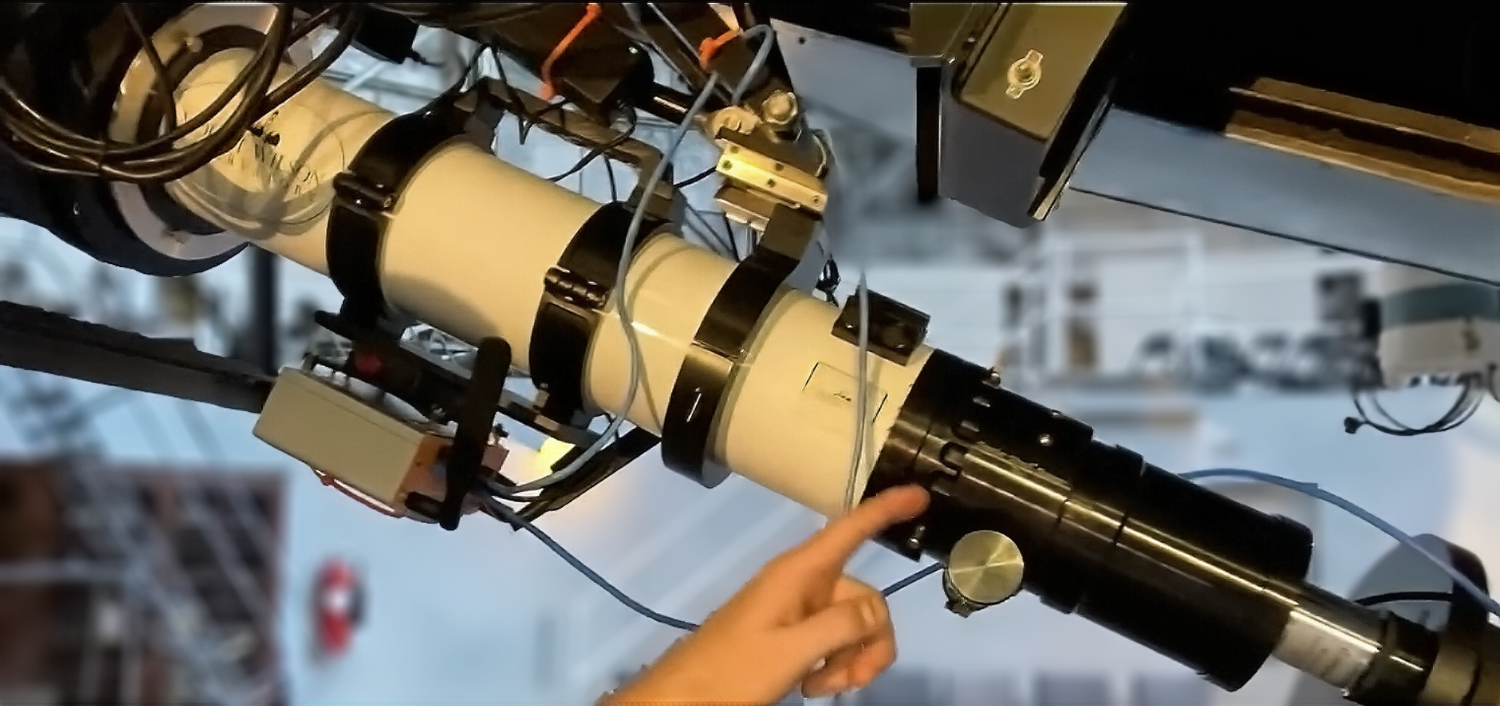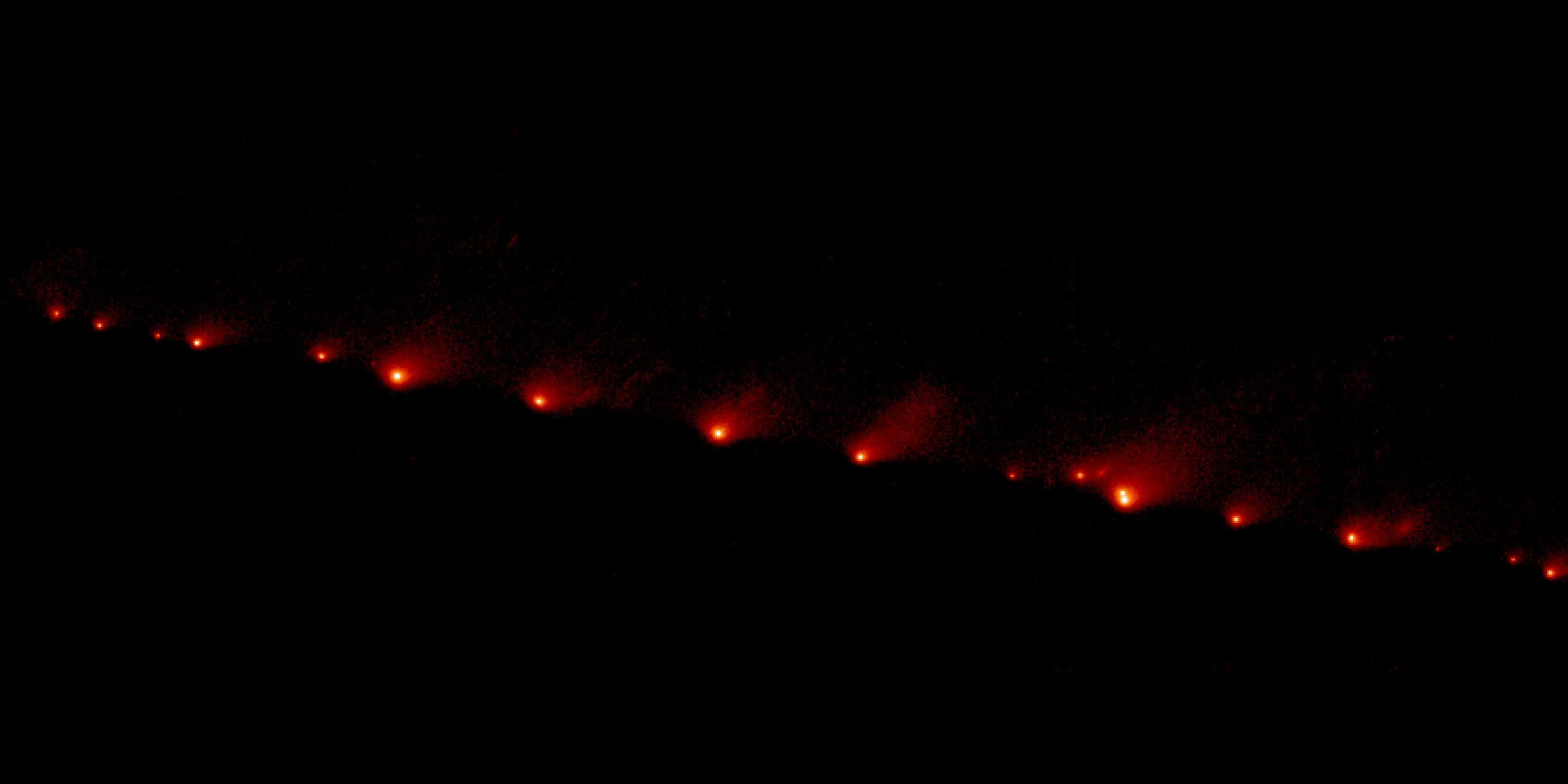Wir freuen uns, Ihnen ein Update aus der Welt der Amateurastronomie präsentieren zu können. Vor einigen Jahren montierten die Mitarbeiter des Mt. Wilson Observatory ein Explore Scientific ED127 Air-Spaced Triplet -Teleskop auf das historische 100-Zoll-Teleskop des Mt. Wilson Observatory. Diese Verbesserung erweiterte die Möglichkeiten der visuellen Astronomie für begeisterte Sterngucker, die erleben wollten, was das historische Teleskop ihnen zeigen konnte, erheblich. Wenn Sie die Gelegenheit hatten, durch dieses 100-Zoll-Teleskop zu beobachten, haben Sie wahrscheinlich den Kosmos durch den Strahlengang des ED127 erlebt.
Zwar ist es faszinierend, himmlische Schätze durch das 100-Zoll-Teleskop zu betrachten, doch sein eigentlicher Zweck bestand darin, Daten zu erfassen und unser Verständnis des Kosmos zu erweitern. Im Laufe der Jahre hat es sein Versprechen mit einer langen Liste von Entdeckungen eingelöst und den Weg für noch größere und anspruchsvollere Teleskope geebnet. Leider ist seine Blütezeit in der professionellen Astronomie längst vorbei. Doch der Einfallsreichtum der Amateurastronomie lässt die äußerst leistungsfähige Optik wieder aufleben.
Obwohl der Mount Wilson unter erheblicher Lichtverschmutzung leidet, gibt es helle Himmelsobjekte, die mit den historischen Instrumenten erreichbar sind. Wenn man einen Weg findet, das Potenzial der Auflösung des 100-Zoll-Teleskops auszuschöpfen, könnte das seinen ursprünglichen Forschungszwecken neuen Schwung verleihen. Wie bei jedem Teleskop ist jedoch auch seine Auflösung durch die atmosphärische Sicht begrenzt. In der professionellen Astronomie werden heute oft teure aktive Optiken eingesetzt, um diesen Effekten entgegenzuwirken. Es gibt jedoch noch eine andere Technik: die Speckle-Interferometrie, die 1970 von Antoine Labeyrie speziell zur Untersuchung atmosphärischer Turbulenzen eingeführt wurde. Mit dieser Technik können Astronomen Auflösungen erreichen, die nahe an der theoretischen Grenze ihrer Teleskope liegen.

Hier kommt S TELAR (Small/Scientific Telescope Engineering Learning and Astronomical Research) ins Spiel, ein Team, das maßgeblich dazu beigetragen hat, die legendären Teleskope am Mount Wilson für moderne wissenschaftliche Zwecke zu nutzen. Ihr neuestes Projekt nutzt Speckle-Interferometrie, um die Umlaufbahnen von Doppelsternen zu messen und so ein tieferes Verständnis dieser Himmelssysteme zu ermöglichen. Dale Ghent (ein Systemingenieur, der in der Amateurastronomie-Community als Hauptentwickler von NINA , einer hoch angesehenen astronomischen Softwareplattform, bekannt ist) ist Teil des STELAR-Teams.
Gent gewährte uns einen detaillierten Einblick in die Arbeit von STELAR und veranschaulichte die wirkungsvolle Kombination aus Amateurengagement und modernster Technologie. Diese Zusammenarbeit unterstreicht den bedeutenden Beitrag, den Amateurastronomen leisten können, indem sie innovative Werkzeuge und Methoden nutzen, um unser Verständnis des Universums zu vertiefen. Neben Amateurwissenschaftlern werden auch junge Studierende des InStAR-Programms unter der Leitung von Rachel Freed von der praktischen Erfahrung mit diesem Wissenschaftspaket profitieren.
Das 100-Zoll-Teleskop ist nicht nur legendär in der Astronomiegeschichte, sondern auch ein Meilenstein wissenschaftlicher Entdeckungen. Es war das größte betriebsbereite Teleskop der Welt, als es 1917 sein Licht erblickte, und spielte eine entscheidende Rolle bei vielen astronomischen Entdeckungen des frühen 20. Jahrhunderts, darunter Edwin Hubbles Entdeckung, dass M31 eine weitere Galaxie und nicht nur eine Nebelformation ist. Die Integration der Speckle-Interferometrie in dieses historische Teleskop ist eine spannende Entwicklung, und wir gratulieren den Innovatoren von STELAR, die sie erfolgreich entwickelt und eingesetzt haben.
Wir bei Explore Scientific freuen uns sehr, einen kleinen Beitrag zur Erforschung von Doppelsternen leisten zu können und sind gespannt auf die wertvollen Daten, die diese Arbeit liefern wird. Wir danken den Mitarbeitern des Mt. Wilson Observatory und STELAR herzlich für diese wichtige Entwicklung und freuen uns auf viele weitere spannende Neuigkeiten aus dieser großartigen Zusammenarbeit.




Hinterlasse einen Kommentar
Alle Kommentare werden vor der Veröffentlichung geprüft.
Diese Website ist durch hCaptcha geschützt und es gelten die allgemeinen Geschäftsbedingungen und Datenschutzbestimmungen von hCaptcha.